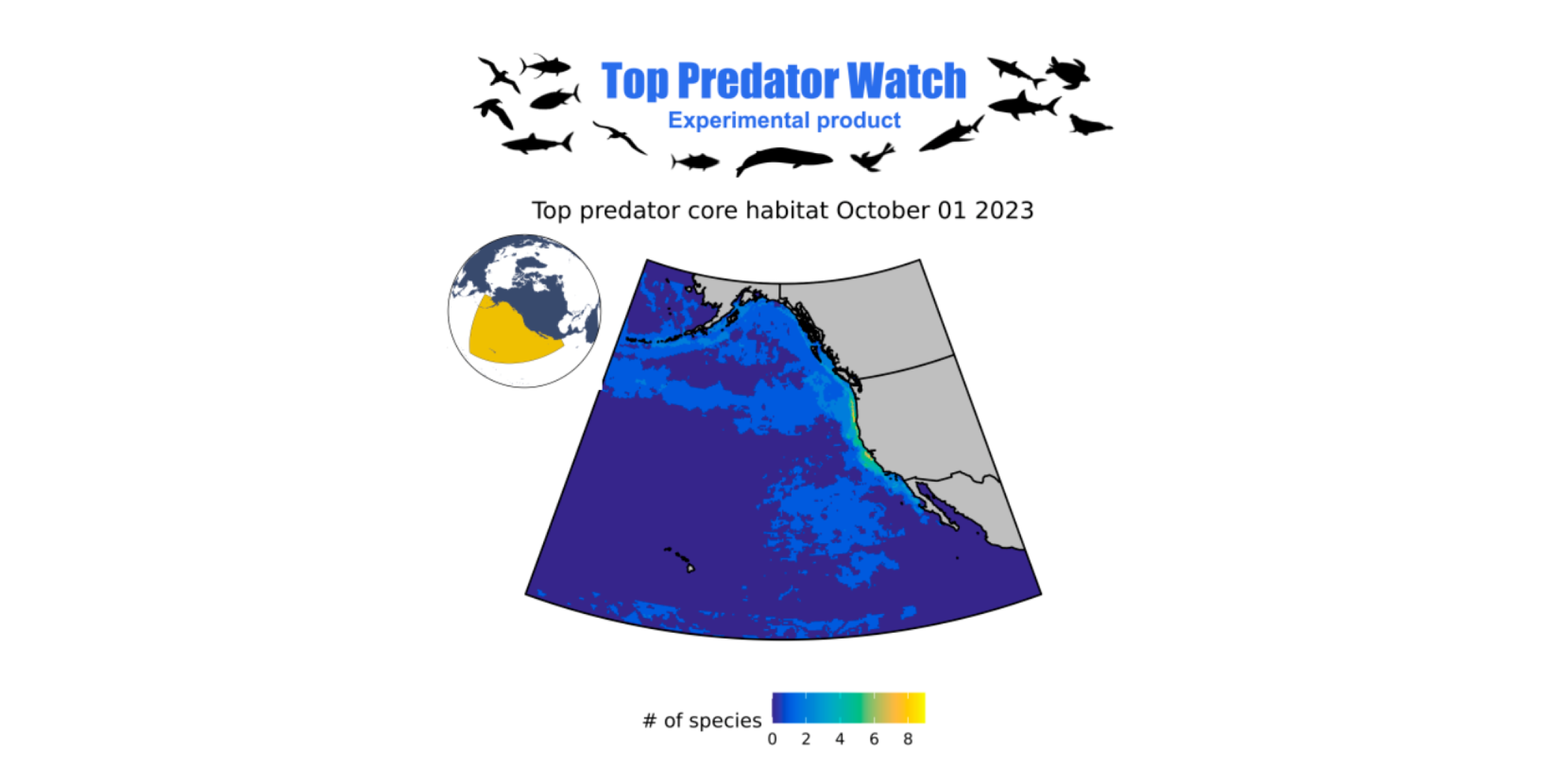Marine heatwaves disturb marine communities, setting off a chain of impacts to the environment as well as coastal communities and economies. No two marine heatwaves are the same, yet research has not developed reliable prediction tools showing how different lengths and intensities of these events will affect ocean species. A new study supported by the Climate Program Office (CPO) demonstrates just how complex those impacts are, using modeling techniques and observations focused on fourteen different species in the Northeastern Pacific. This work was funded by a collaborative grant from CPO’s Climate Observations and Monitoring (COM) Program, Modeling, Analysis, Predictions and Projections (MAPP), and Climate and Fisheries Adaptation (CAFA) programs aiming to improve climate understanding and information for marine sanctuary management planning.
CPO-supported scientists Stephanie Brodie of UC Santa Cruz and Steven Bograd of NOAA’s Southwest Fisheries Science Center worked with a team of researchers from NOAA and other U.S. academic institutions to fill in knowledge gaps on the impacts of marine heatwaves on ocean animals. Certain types of sharks, seals, birds, and fish were among the fourteen predator species used in the study, all of which are ecologically, culturally, and commercially valuable. The models specifically predicted what happened to each animal during four marine heatwaves in the Northeastern Pacific, in 2014, 2015, 2019, and 2020. The predictions, published in Nature Communications, showed the impacts on each predator are far from consistent. Some habitats were nearly lost, while others doubled in size. Some were shifted across political jurisdictions, creating complicated bio-geography issues. For example, up to 31% of the predicted habitat for three valuable tuna species shifted from Mexico to the US, a finding that is backed up by observations from the 2014 and 2015 heatwave events. A temporary change like this needs careful management to maintain sustainable fishing practices and avoid exploitation. Using the new models from this study, the authors created a new tool, Top Predator Watch, which is a daily updated map showing predictions of the locations of species and the density of their populations in the west coast. Resource managers can use this tool to address marine heatwave challenges in real time. The authors say the next step is to forecast the distribution of these ocean animals in response to future anticipated events.
For more information, contact Clara Deck.



